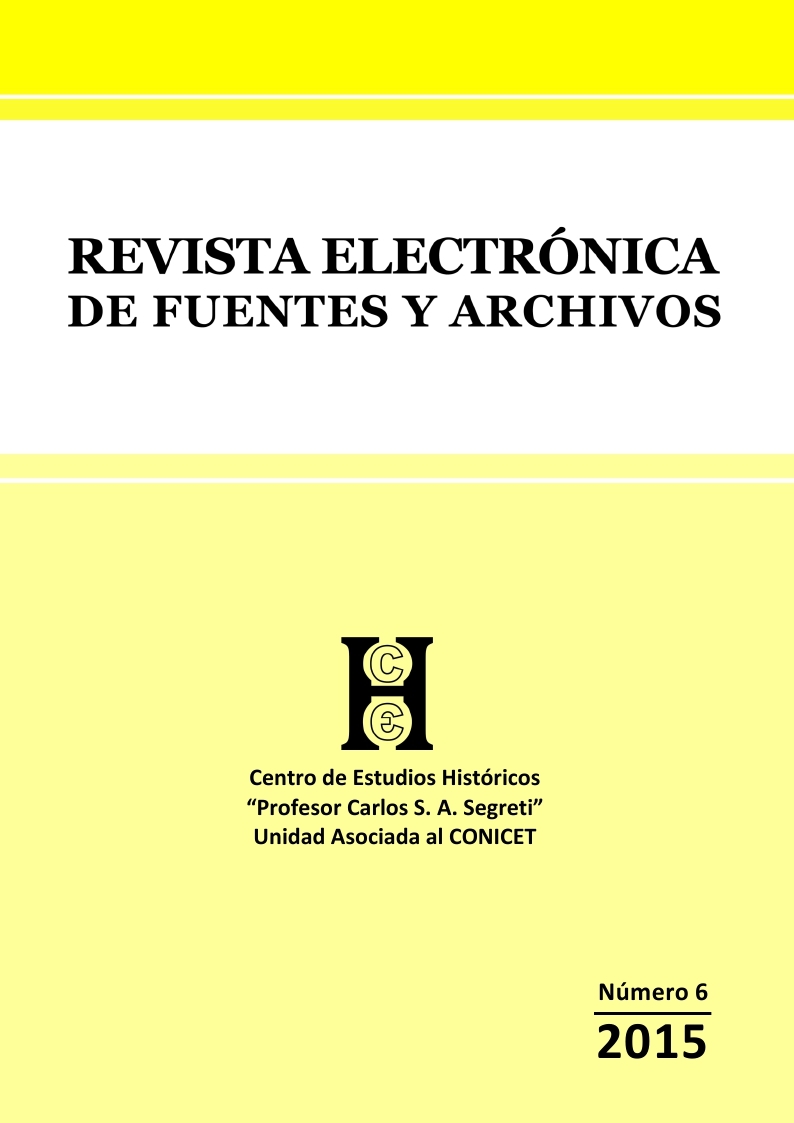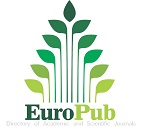From colonial society to republican society: whites, indians and blacks
Keywords:
social historiography, social categories, Catamarca, homogenization, invisibilityAbstract
The break given opposite to the european metropolis after 1816 and the incorporation to the capitalist world order, finished the argentine civil wars, produced a reconfiguration in the social categories.The elements that make up this break in the cultural, social and political context are homogenized in official historiography by phenotypic characteristics, profession, literacy rate, between other. Our aim is to analyze the social categories used in the electoral roll of the city of Catamarca for the period between 1891 and 1893 on the continuity and rupture of the elements of the post-colonial social structure. The research had a heuristic character and then a critical analysis, based on the extracted source of La Actualidad, a local newspaper of the late nineteenth century. Social conceptualizations used in this city, inquire as their origin and characteristics allow us to understand the semantic content and sense of significance ratings on local people. Among the results we can say that cultural diversity expressed for the period included are invisible as social groups and subject to the relations of domination of the new republic. This reconfiguration rearranges social categories, subordinates and naturalizes the subaltern and reaffirms the power of the ruling classes.
Downloads
References
ALVERO Luis A., “En búsqueda del equilibrio. Producción y finanzas públicas de Catamarca a fines del siglo XIX”, Proyecto de Investigación “Política y economía en la construcción de los estados provinciales. Catamarca 1890-1943”, SECYT, UNCa 2010.
BALMORI Diana, Stuart F. WOSS y Miles WORTMAN, Las alianzas de familias y la formación del país en América Latina, México D.F., FCE, 1990.
BAZÁN Armando R., Historia del Noroeste Argentino, Buenos Aires, Plus Ultra. 1995.
BUSTOS ARGAÑARAZ Prudencio, “El patriciado de Córdoba. Contribución para el estudio de su génesis”, Boletín del Centro de Estudio Genealógicos de Córdoba, núm. 27, 1998.
COMADRÁN RUIZ Jorge, “La población de la ciudad de Catamarca y su jurisdicción al crearse el virreinato”, Primer Congreso de Historia de Catamarca, t. II, Buenos Aires, Talleres Gráficos de Domingo Taladriz, 1965.
DE LA FUENTE Diego, Primer censo de la República Argentina, Buenos Aires, Imprenta del Porvenir, 1872.
DE LA FUENTE Diego, Segundo censo de la República Argentina, Buenos Aires, Taller Tipográfico de la Penitenciaría Nacional, 1898.
DE LA ORDEN DE PERACCA Gabriela, Marcelo GERSHANI, Vilma ROLDÁN y Alicia MORENO, “Conformación y Consolidación de Élite Colonial de Catamarca. Siglo XVII y Primera Mitad del Siglo XVIII”, Revista de Ciencia y Técnica, vol. VII, núm. 10, 2001, pp. 139-145.
FARBERMAN Judith y Roxana BOIXADÓS, “Sociedades indígenas y encomienda en el Tucumán Colonial. Un análisis comparado de la visita de Luján de Vargas”, Revista de Indias, 2006, vol. LXVI, núm. 238.
GIRBAL-BLACHA Noemí M., Ayer y hoy de la Argentina rural. Gritos y susurros del poder económico, Buenos Aires, CEAL, 1994.
GROSSO José L., Indios Muertos Negros Invisibles. Hegemonía, Identidad y Añoranza, Córdoba, Brujas, 2008.
GUZMÁN Florencia, Los claroscuros del mestizaje. Negros, indios y castas en la Catamarca colonial, Córdoba, Encuentro, 2010.
GUZMÁN Gaspar, Historia colonial de Catamarca, Buenos Aires, Milton, 1985.
OLMOS Ramón R., Historia de Catamarca, Catamarca, Sarquís, 1992.
ROFMAN Alejandro, La política económica y el desarrollo regional, Bogotá, Universidad Simón Bolívar, 1981.
ROMERO José L., Breve Historia de la Argentina, Buenos Aires, Eudeba, 1967.
Downloads
Published
Issue
Section
License
Copyright (c) 2015 Ezequiel Fonseca, Claudio Caraffini

This work is licensed under a Creative Commons Attribution-NonCommercial-ShareAlike 4.0 International License.
Se puede compartir (copiar y redistribuir el material en cualquier medio o formato) y adaptar (remezclar, transformar y construir a partir del material), siempre que: a) se cite la autoría y la fuente original de su publicación (revista, editorial y URL de la obra); b) no se use con fines comerciales; c) la distribución de las obras derivadas se haga con una licencia igual a la que regula la obra original.




















